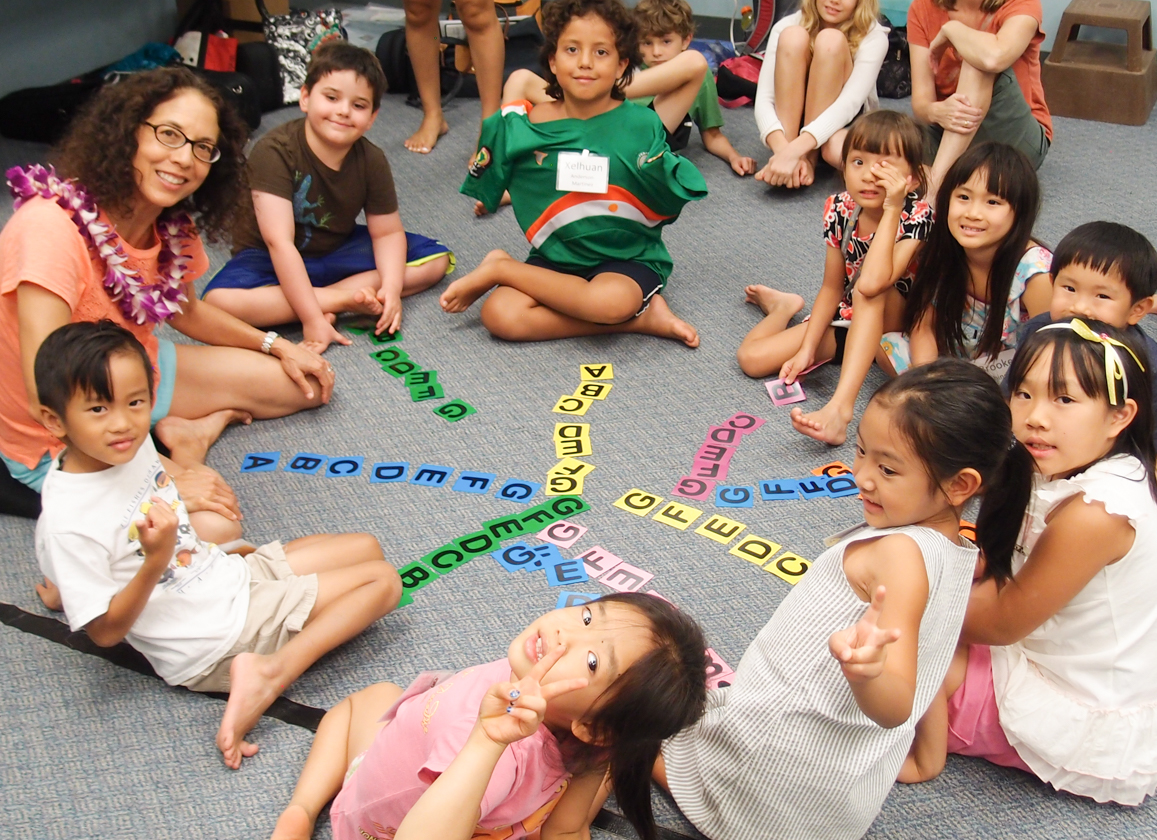"Okay! Let's play again." For this round, see if they can follow you by getting their first card set up rather than you repeating the directions. Just place your A card right in front of you like in the first round and pudding shuffle your other cards. Glance around as you're mixing your cards to see if everyone has their A card ready and is mixing up their remaining cards. Embrace the attitude that if someone isn't ready, it's not because they are being contrary; it's because he or she doesn't know what's expected.
If someone still isn't ready:
- Set the example by continuing to pudding shuffle your cards
- Catch the student's eye, smile, and point to your A card, then continue mixing, watching to see that they understand
- Say to everyone in general, "I have my A card ready. Please check if your A card is ready, too."
"Go!"
Everyone is arranging alphabet cards. "Fine!" "Fine!" . . . . "Fine!"
Without taking too much time, pause for a moment to feel the joy as you glance around to see how your students did. If you see something mixed up or a card upside down (not important), there's no need to say anything. Instead, the student will likely see what needs to be fixed when you check. Students are excellent at glancing around at others to copy and learn.
"Wow! That was fun. Okay, let's point and check: A B C D E F G F E D C B A." If someone still has cards mixed up, either do a verbal check together one more time or simply play Fine again. Singling out a student to point out a mistake is not as helpful as letting the student figure out how to be correct. This gives students the opportunity to learn on their own.
Occasionally, I will casually reach over and rearrange a student's cards without saying anything.

If everyone seems ready, pudding shuffle your cards again, put your A card in place, then look up to see if your students have copied you and are ready to play again.
